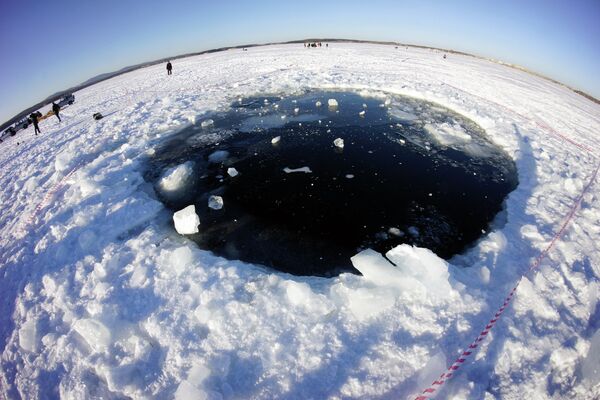YEKATERINBURG, August 21 (RIA Novosti) – Russian scientists have confirmed the authenticity of a 3.4-kilogram (7.5-pound) fragment of the Chelyabinsk meteorite – the largest piece found so far from the meteorite that hit the Urals region in February.
An unnamed resident of the Chelyabinsk region in Russia’s Urals found the fragment near the village of Timiryazevsky and submitted it for analysis and authentication to Chelyabinsk State University.
“Yes, it is a meteorite. This is the largest [Chelyabinsk] fragment analyzed so far by scientists,” Andrei Kocherov, an official from the university, told RIA Novosti.
The lucky owner was given an official certificate confirming the authenticity of the celestial fragment, Kocherov said.
The meteorite, more than 18 meters in size and weighing 10,000 metric tons, exploded over the city of Chelyabinsk in the Urals on February 15. The blast was an equivalent to 440 kilotons of TNT – 27 times more powerful than the nuclear bomb that destroyed Nagasaki in 1945. The meteorite blast left 1,200 injured, most by window glass shattered by the shockwave.
The meteorite broke into some seven large fragments, and one of them is believed to have fallen into Chebarkul Lake, forming a hole in the ice about eight meters in diameter. In late March, a radar probe of the bottom of the lake revealed a crater possibly created by a fragment of a meteorite.
Chelyabinsk region authorities have allocated 3 million rubles (about $10,000) for the recovery of the fragment, which is believed to have an oval shape, a size of up to a meter and a weight of about 600 kilograms.


